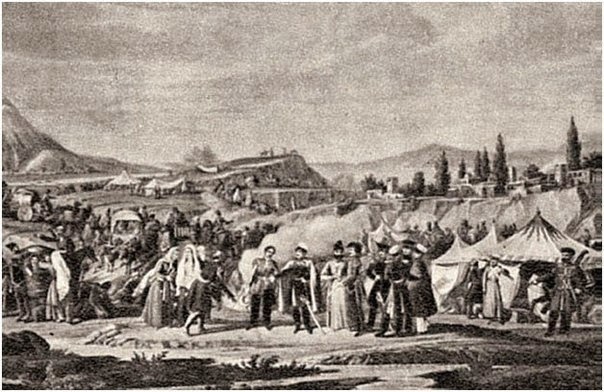In the second third of the nineteenth century the Russian Empire continued to populate the region with Russians and in this historical period the social base of Russian colonization consisted of Orthodox peasants. However, the rate of quantitative growth of Russians in the South Caucasus did not meet the requirements of the empire’s colonization plans and the dominance of the Armenian colonization confirmed the reality of imbalances in the resettlement policy of the empire.
Drawing attention to mistakes in the resettlement policy in the South Caucasus, one of the apologists of pre-revolutionary Russia N.N. Shavrov pointed out: “We started our colonization not with placement of the Russian people in the Caucasus, but with placement of foreigners”. Supporting this stance, another Russian apologist F. Gershelman also believed that “Armenians do not provide guarantees of political reliability “.
At the end of the nineteenth century, by resettling the Orthodox Russian peasants from central provinces into the region, Romanov Russia adhered to the well-known thesis of the Great Russian ideology: “Russian state power in the Caucasus was there to be truly Russian”.
As a result of a new wave of Russian colonization in the early twentieth century, 89 resettlement villages formed just in the Mil and Mugan steppes of northern Azerbaijan, and the Russian population just in the South Caucasus has exceeded 350,050 people. Overall, in the early twentieth century, the number of Russians in the Caucasus was over 3.76 million people and the lion’s share of the number of Russians belonged to the northern Caucasus – 3,492,912 people, which clearly demonstrate the success of Russian colonization in this choronym …
Demographic changes in the mega region during the period under review were due not only to Russia’s resettlement policy, but also the national liberation movement of the peoples of the Caucasus, which the Empire was able to suppress by the 70s of the nineteenth century. Not resigned to the new order established by the Russian authorities, peoples of the Caucasus, after the defeat of the Ottoman Empire in the last Russian-Ottoman War (1877-1878), were leaving their ancestral lands in masses … During those years, the Circassians, who lived outside Kuban, “losing hope of further resistance with the fall of Shamil”, resettled largely in Turkey, 470 thousand Circassians also left their homeland during this period.
In the early twentieth century, this downward spiral of the demographic changes in the Kuban region continued. Peoples of this choronym were subjected to enforced resettlement – deportation, Caucasian administration resettled them from the mountains into Maykop, Ekaterinodar and other counties of the North Caucasian provinces. As a result, in 1915, in the Kuban region, of all the mountain peoples there were left only 131,662 people, from a total population of 2 598 205 people in the area. The minor tones of ethnic and confessional changes in the mega region were influenced by administrative – repressive measures of the Russian authorities against the peoples of the Caucasus. During the First World War, the Russian authorities ruthlessly suppressed the resistance of the Caucasian peoples. Thus, the national liberation struggle of the Adjars during the First World War was drowned in blood. As a result of actions of the governor-general of the Batumi region Lyakhov, only in the Chorokh valley, 45 thousand Adjars were physically liquidated, while the other part of them joined the army of the refugees of the Caucasian Muslims.
However, the peoples of the Caucasus did not put up with the foreign domination and continued to struggle. In those years, Azerbaijani people also opposed the Russian domination, as evidenced particularly by the gachag movement that lasted not only until the fall of the Romanov dynasty, but also in the Soviet period (until the end of 40s of XX century – Ed.).
All these above-mentioned processes during the migration policy of the Russian Empire in the Caucasus formed socio-political collisions, which still attach particular importance to the “Caucasian Knot” in the system of international relations. Thus, the issues of “Karabakh”, “Ossetia”, “Abkhazia”, “Adjaria”, “Meskhetia” are parts of this knot and are used in the geopolitical games of the leading states of the world, seeking to expand their spheres of influence in the mega region.
Hajar Verdiyeva Doctor of Historical Science




Be the first to comment at "Resettlement policy of the Russian empire in the Caucasus Part III"